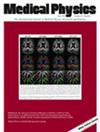Strip and boundary detection multi-task learning network for segmentation of meibomian glands
Abstract
Background
Automatic segmentation of meibomian glands in near-infrared meibography images is basis of morphological parameter analysis, which plays a crucial role in facilitating the diagnosis of meibomian gland dysfunction (MGD). The special strip shape and the adhesion between glands make the automatic segmentation of meibomian glands very challenging.
Purpose
A strip and boundary detection multi-task learning network (SBD-MTLNet) based on encoder-decoder structure is proposed to realize the automatic segmentation of meibomian glands.
Methods
A strip mixed attention module (SMAM) is proposed to enhance the network's ability to recognize the strip shape of glands. To alleviate the problem of adhesion between glands, a boundary detection auxiliary network (BDA-Net) is proposed, which introduces boundary features to assist gland segmentation. A self-adaptive interactive information fusion module (SIIFM) based on reverse attention mechanism is proposed to realize information complementation between meibomian gland segmentation and boundary detection tasks. The proposed SBD-MTLNet has been evaluated on an in-house dataset (453 images) and a public dataset MGD-1K (1000 images). Due to the limited number of images, a five-fold cross validation strategy is adopted.
Results
Average dice coefficient of the proposed SBD-MTLNet reaches 81.08% and 84.32% on the in-house dataset and the public one, respectively. Comprehensive experimental results demonstrate the effectiveness the proposed SBD-MTLNet, outperforming other state-of-the-art methods.
Conclusions
The proposed SBD-MTLNet can focus more on the shape characteristics of the meibomian glands and the boundary contour information between the adjacent glands via multi-task learning strategy. The segmentation results of the proposed method can be used for the quantitative morphological characteristics analysis of meibomian glands, which has potential for the auxiliary diagnosis of MGD in clinic.

 求助内容:
求助内容: 应助结果提醒方式:
应助结果提醒方式:


